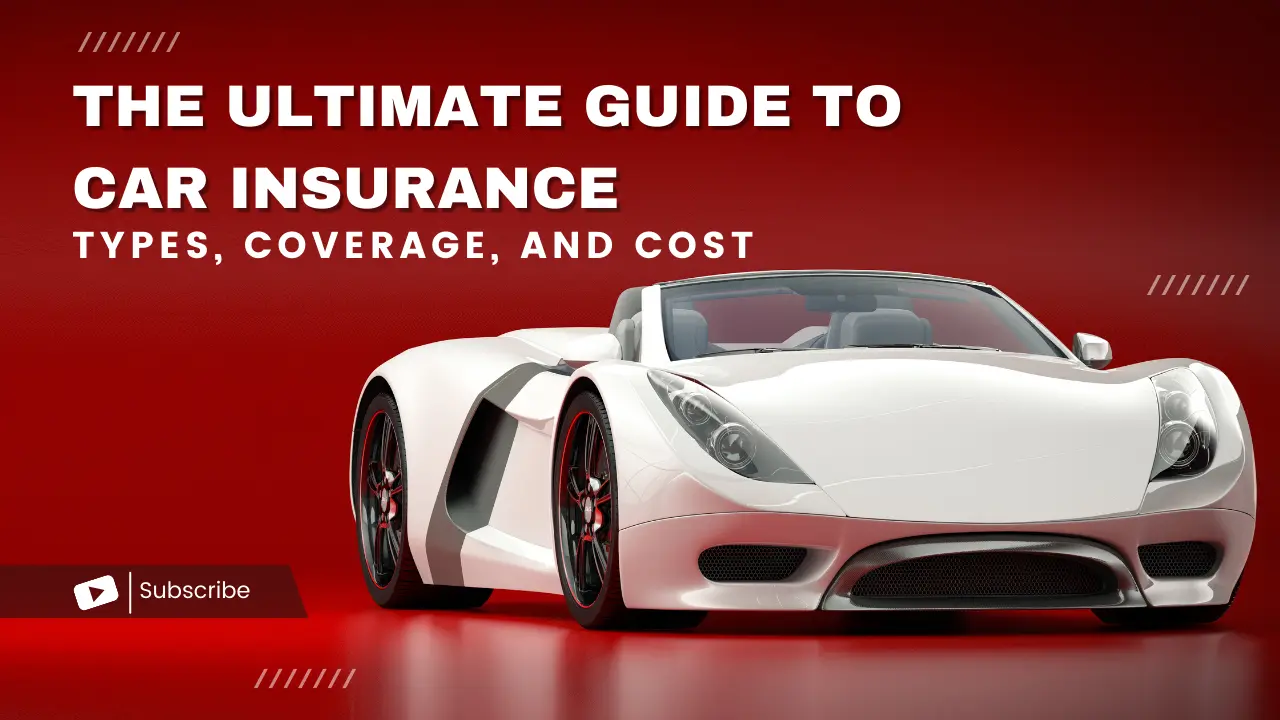Car insurance is more than just a legal requirement; it’s a crucial shield that protects you and your vehicle from financial hardships in case of accidents, theft, or unforeseen events. Understanding the intricacies of car insurance can be the difference between peace of mind and financial stress. In this ultimate guide, we’ll walk you through the types of car insurance, coverage options, and how to manage the cost effectively.

Understanding Car Insurance Basics
Car insurance can seem complex, but it boils down to a few fundamental concepts:
Premium: This is the amount you pay to your insurance company for coverage. It’s often paid on a monthly or yearly basis.
Deductible: The deductible is the amount you’re responsible for paying before your insurance kicks in. Higher deductibles usually result in lower premiums.
Coverage: This term refers to what your policy protects. There are different types of coverage, each serving a specific purpose.
Types of Car Insurance Coverage
Car insurance coverage comes in various forms, and understanding the differences can help you tailor your policy to your needs. Here are the main types:
Liability Coverage: This covers damages and injuries you cause to others in an accident. It’s often required by law.
Collision Coverage: If you’re involved in a collision, this covers the repair or replacement of your vehicle.
Comprehensive Coverage: This protects your car from non-collision incidents like theft, vandalism, and natural disasters.
Uninsured/Underinsured Motorist Coverage: If you’re in an accident with a driver who lacks insurance or enough coverage, this kicks in to cover your expenses.
Personal Injury Protection (PIP): PIP covers medical expenses and other related costs for you and your passengers, regardless of who’s at fault.
Factors Affecting Car Insurance Rates
Now that you understand the basics and types of coverage, it’s essential to recognize the factors that influence your car insurance rates:
Driving Record: Your history of accidents and violations greatly impacts your rates. A clean record usually leads to lower premiums.
Location: Where you live can affect your rates due to factors like crime rates and traffic density.
Vehicle Type: The make, model, and age of your car play a significant role in your premiums. High-performance or luxury cars often have higher rates.
Age and Gender: Younger and male drivers typically face higher rates, as they’re statistically more prone to accidents.
Coverage and Deductibles: The level of coverage and your deductible choices can directly affect your premium.
How to Save on Car Insurance
While insurance is a necessary expense, there are ways to save:
Bundle Policies: Combining car insurance with other policies like home insurance can lead to discounts.
Shop Around: Get quotes from multiple insurance providers to find the best deal.
Maintain a Good Credit Score: Many insurers use credit scores to assess risk.
Drive Safely: A clean driving record leads to lower rates over time.
Ask for Discounts: Inquire about discounts for safe driving, good student status, or safety features on your car.
Increase Deductibles: Raising your deductible can reduce your premiums, but be prepared for higher out-of-pocket expenses if you make a claim.
Watch the article below
In conclusion, car insurance is a vital aspect of responsible car ownership. Understanding the types of coverage, factors affecting rates, and how to save on insurance can empower you to make informed decisions. Just Little Changes is here to help you navigate the world of car insurance and other related topics. Feel free to reach out with any questions or for personalized assistance on your car insurance journey. Remember, even just little changes in your policy can make a big difference in your financial well-being.
